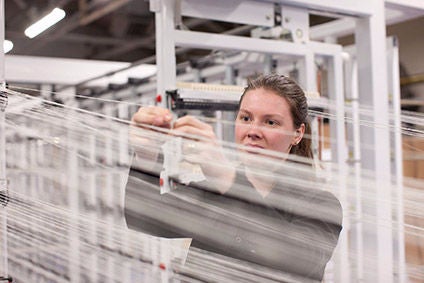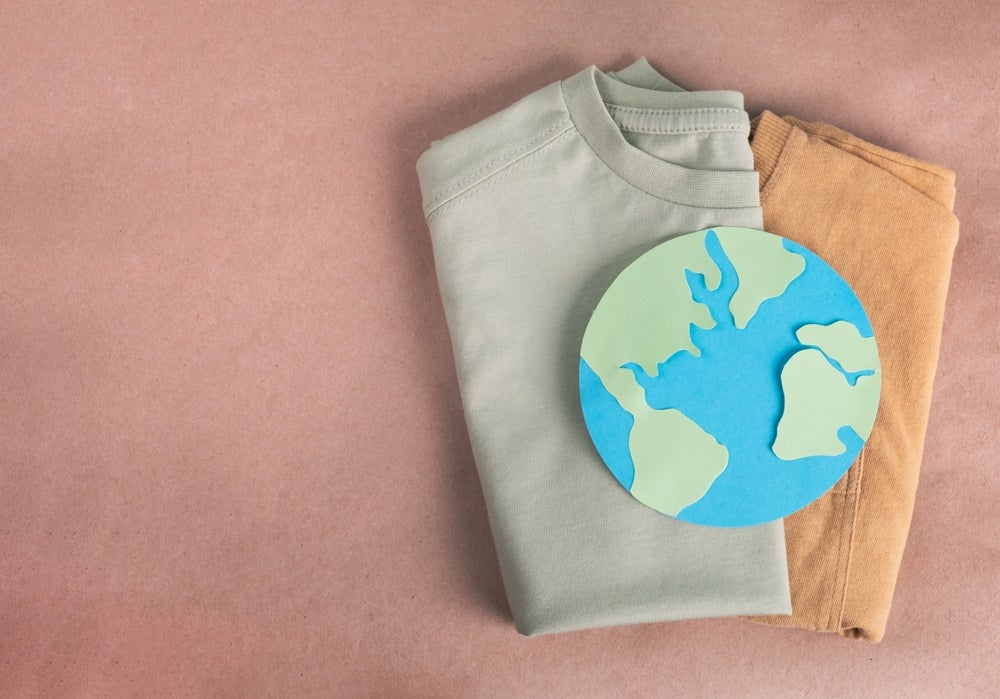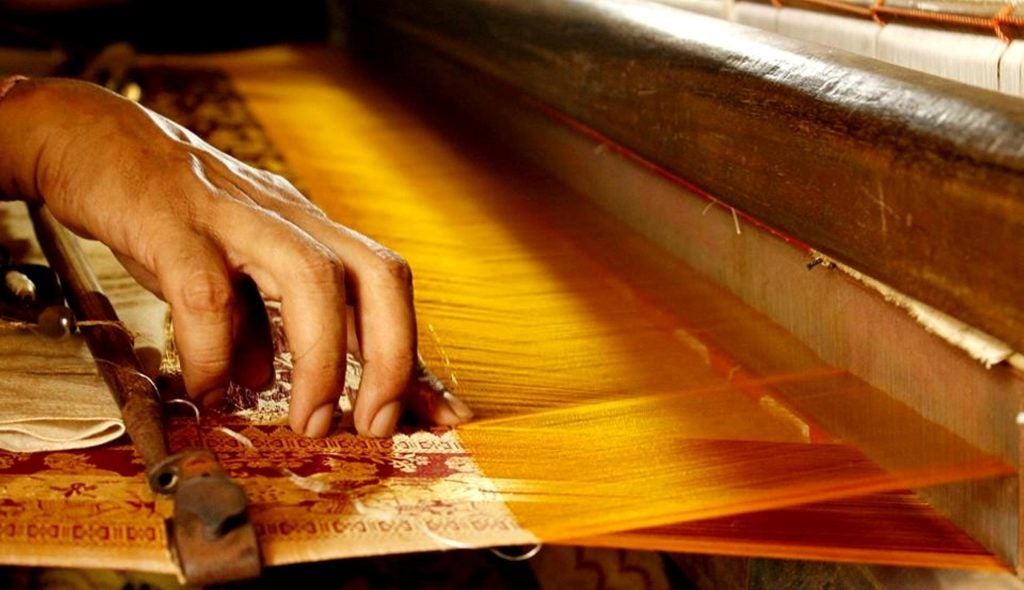
British manufacturing is enjoying a renaissance, helped by growth in the cost benefits of reshoring. Yet the scale of the challenge presented by Brexit to the UK’s fashion and textiles industry is a sizeable one that needs both government support and more industry confidence if it is to thrive.
Recent government statistics show UK factories are experiencing their strongest performance in nearly three decades, with export demand at a 22-year high. Not only are British goods more affordable overseas, but the higher cost of imports, due to the fall in the pound, makes products manufactured in the UK less expensive. Firms are also continuing to see an increase in demand for ‘Made in Britain’ goods.
For the UK’s apparel and textile industry, GBP9.1bn (US$11.93bn) worth of product is manufactured domestically each year, according to data from the UK Fashion and Textiles Association (UKFT). This figure is up 30% since 2010.
The EU accounts for 74% of British exports, while the UK imports GBP23.5bn worth of clothing and textiles annually – around 45% of this is textiles and 25% clothing from the EU.
Challenges stack up
But while the sector appears to be thriving, the challenges it faces are stacking up, not least concern over the availability of talent such as the skilled machinists who work in leading manufacturing facilities in cities such as London and Manchester. This is despite the industry employing over 105,000.
See Also:
And the situation is unlikely to improve as a result of Brexit, according to Nigel Lugg, chairman of the UKFT, who told a recent conference on ‘Beyond Brexit – Helping the fashion industry turn uncertainty into opportunity,’ organised by the Association of Suppliers to the British Clothing Industry (ASBCI), that the oldest factory in the world – located in the UK – can only find skilled linkers from Hungary. He was told at another factory he visited recently that 20% of the workforce was considering leaving the UK because of the huge uncertainty over the right to stay and work in the country once it leaves the EU.
How well do you really know your competitors?
Access the most comprehensive Company Profiles on the market, powered by GlobalData. Save hours of research. Gain competitive edge.

Thank you!
Your download email will arrive shortly
Not ready to buy yet? Download a free sample
We are confident about the unique quality of our Company Profiles. However, we want you to make the most beneficial decision for your business, so we offer a free sample that you can download by submitting the below form
By GlobalData“It is highly unlikely from negotiations that free movement is going to become a reality, even though we are pushing the Government very hard for this,” he told delegates. “We need to be able to add new roles such as pattern cutters, sample machinists and linkers. A recent report has estimated we will need 20,000 new manufacturing jobs in our sector. We won’t be able to recruit all these new employees with homegrown talent. We also need a new immigration system to remove the GBP35,000 minimum salary requirement.”
Limiting access to the single market would mean more product would be made in the EU and more would be warehoused in the EU and shipped from the EU. More offices would be established in the EU and thus more jobs created in the EU at the expense of the UK, Lugg says, unless the sector lobbies for what it wants with the Government.
According to the UKFT, in value terms, the UK is the second largest import market after Germany and the largest in volume terms. Leaving the EU would see many exporters in developing countries lose their preferential access to the UK. Lugg says the Government needs to start negotiating trade deals not only with exports markets such as the US but also for importing countries such as Bangladesh.
Lobbying Government
“One of the key demands from the UKFT is to remain in the customs union. The simplicity of sending goods too and from Europe has been a huge benefit and we need to maintain that competitive advantage for UK business,” Lugg said.
“The current lack of non-tariff barriers for the EU is a huge bonus. Industry needs to know what will happen to standards, environmental legislation, arrangement for samples to trade shows, these are just some of the practical issues we need to address.
Lugg highlighted a number of scenarios. Under a hard Brexit, the GBP2bn worth of product the UK source from Bangladesh would see duty go from a zero tariff to a 23% tariff. If the country moves to WTO rules, then the average tariff on fashion and textile products coming to the UK will be between 10-15%, adding to the 20% increase in cost due to the rate of dollar.
“You would see things becoming 35% more expensive on imports. This is a big opportunity for UK manufacturing. The structure of the supply chain means retailers will not be able to pass these costs and the suppliers would not be able to take them on either. So we face either an increase in prices or losing significant margin at retail.”
But as well as skills shortages, import tariffs and the destabilising effect of not knowing what will happen or when, Lugg pointed to delays at borders as a further industry threat in the wake of the Leave vote.
David Reay, founder of the Northern Clothing and Textile Network echoed this sentiment, noting the importance of Government in getting behind the industry and recognising its importance – a strong domestic base, he says, is essential to meeting the challenges of Brexit.
“The industry needs careful investment and mentoring that identifies and supports the sub-sectors and micro businesses that make up 80% of its manufacturers. The Made in Britain brand needs protecting by encouraging best practice over ‘informal’ practices, and the industry needs support to maximise design capability, build advanced manufacturing sites, nurture clusters, and realise the potential of digital developments.
“This is a tipping point, and retailers hold the key to the survival and growth of UK manufacturing, but they need to stop using the sector for top-up orders that keep suppliers small and follow the example of companies like David Nieper by owning more production facilities.”
Benefits to UK manufacturing
Undoubtedly, however, negotiating the right free trade agreements could provide a huge boost to the sector’s export drive. The ability to open duty for access to markets such as the US, Canada and Japan through FTAs would provide huge significant growth potential in UK manufacturing.
According to the UKFT, the US is the UK’s largest fashion and textile export market outside the EU in 2016, selling GBP383m worth of goods. It is the main market for sales of high-end designer fashion but duties and tariffs mean many UK companies are reluctant to target the US market.
In Europe, the UK is ranked number one for textile innovation and number three in the world. There are major growth opportunities for UK companies in medical textiles, advanced materials and composites and smart textiles.
“There has been no better moment for UK retailers to consider increasing their sourcing to make closer to home on shorter, flexible lead times,” says Lugg. “We have seen a resurgence of fashion in ladies wear, but we have to encourage a vertical supply chain with online and digital marketing as demand for fast fashion is intense.
“With the right support and intervention from the government, Brexit could see a step-change in the fortune of UK manufacturing.”
Figures from the UKFT show the UK consumer spent GBP70bn on fashion in 2015. The wider industry employs 880,000 people and contributes GBP28.1bn to the economy.
“The Government needs to increase support for exports, relax funding rules, and let the world know the UK is open for business,” Lugg explained. “And the sector needs to come together with one voice and take its business case to Government to secure the right deal for the industry and the country.”
The reality
But while there are indeed opportunities to grow the UK’s textile and manufacturing base, the reality is that the existing capacity is not of the size that would allow it to take production sourced either from the EU or further afield.
Most of the UK’s garment manufacturing capacity is on smaller runs for high-end products. So there is much work to be done.
“We need to invest back into our industry. We need to look at raw material, accessory supplies, and vertical supply chain all here in the UK. This is the way the modern world works and we do not have the benefit of time,” Lugg emphasised.
He, like other speakers at the conference, agreed on one point, that the industry cannot afford to wait on the government. In order to survive and thrive before, during, and after Brexit, the UK garment and textile industry must be proactive now. Businesses need to start planning and plan to be adaptable, develop strategies for multiple scenarios, strengthen key relationships, and take advantage of the benefits of UK manufacturing.
Christopher Nieper from British-made fashion brand David Nieper, told delegates: “We can lobby Government but we can’t wait for Government.” Taking a pragmatic view, he suggested companies view Brexit as an opportunity and not only seize the advantages offered by UK manufacturing but also take the initiative to overcome current barriers to the expansion of the sector.
Key among these is skills, he said. “The whole ecosystem of skills has gone, so we need to start from scratch – and that means starting young.” David Nieper’s efforts to reskill the industry have started at primary school level and extend through secondary to further education with university scholarships, and the company also trains staff in industry-specific skills via its Sewing Academy.
Kevin Townend from Advanced Supply Chain told the conference, the UK’s fashion and textile industry has the power to shape its own success after Brexit. “While the Government is negotiating trade deals and immigration policies, it is up to the industry to manage the real implications of leaving the EU, and success depends on becoming more agile, more innovative, and focusing on providing Great British quality to the world market.”
Mike Flanagan from apparel consultancy business Clothesource questioned whether Brexit will happen at all, given the complexities of the exit process.
“Nothing about Brexit will make it easier for British companies to do business,” he said, “but it will jeopardise our current special trading terms, and negotiations on new terms can’t start until we leave. However, FTAs are reciprocal, and not everyone wants one, and certainly not with a post-Brexit Britain alone unless we are offering concessions the EU won’t.”
He also pointed to the re-imposition of borders and what that will mean for an industry that sees 92% of its clothing exports and 31% of clothing imports travel through European customs ports. And, if free movement ends, all European drivers will need work permits.
“Politicians are not lying when they threaten trade chaos,” he said, “but they are also very good at changing their minds. The only certain thing about Brexit is uncertainty.”







